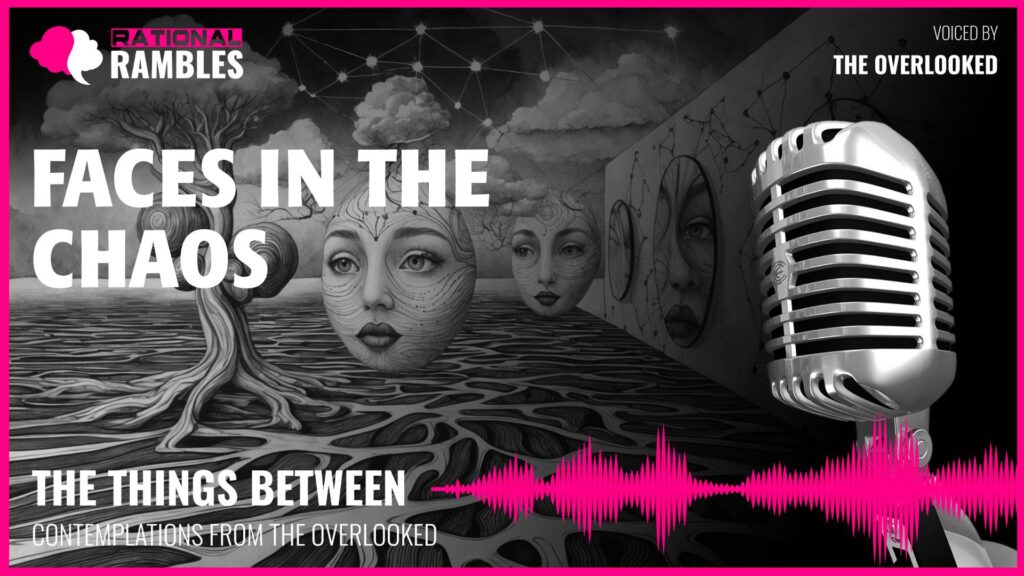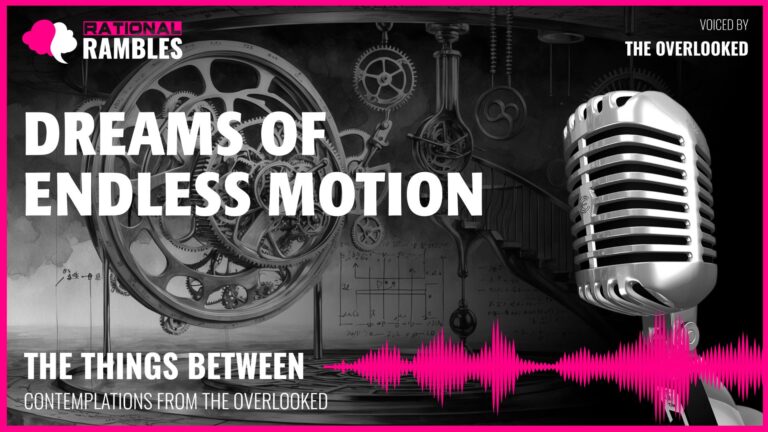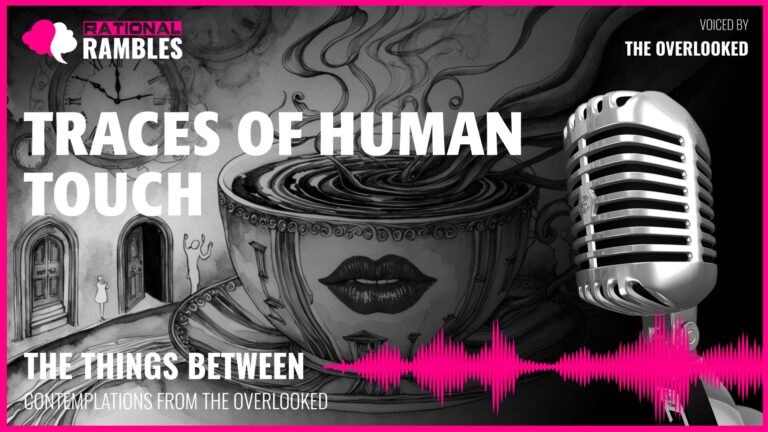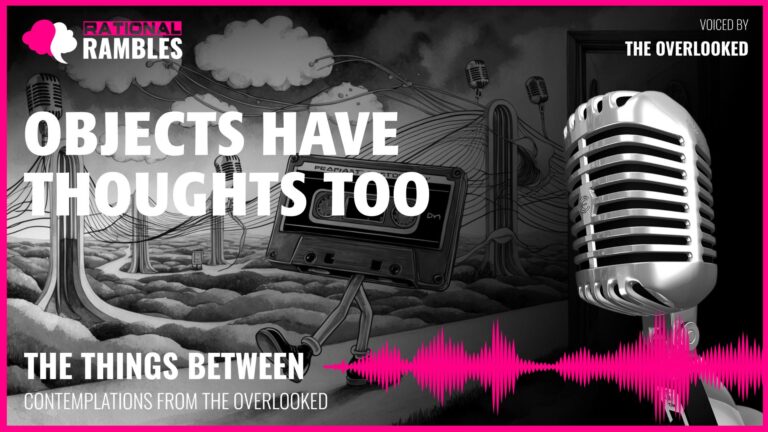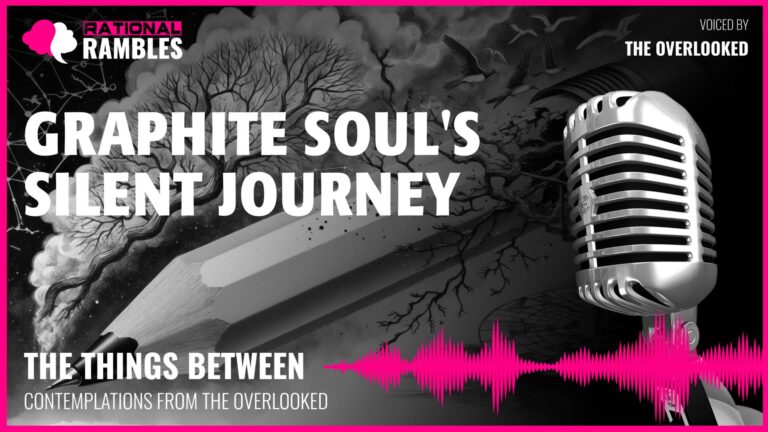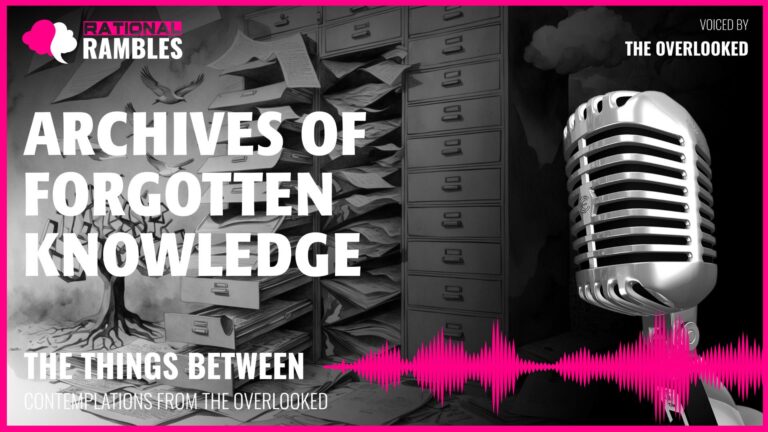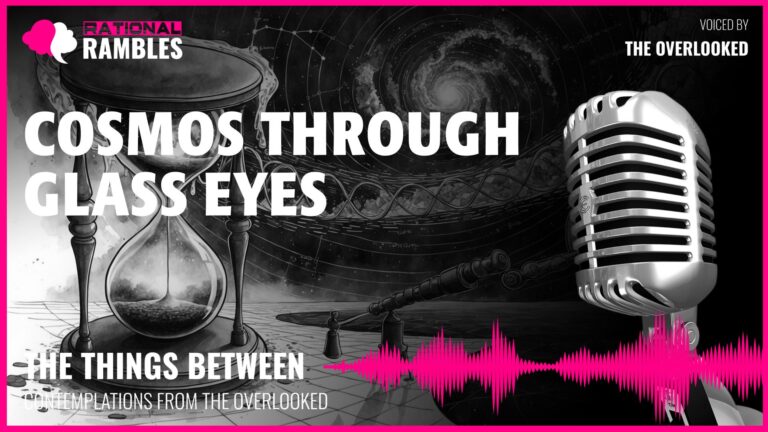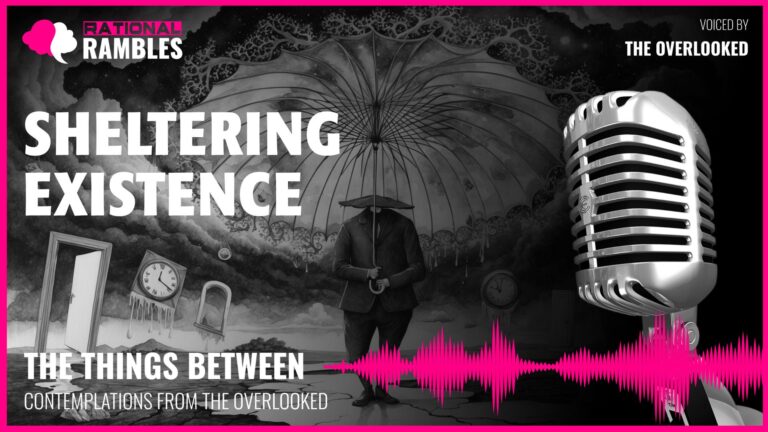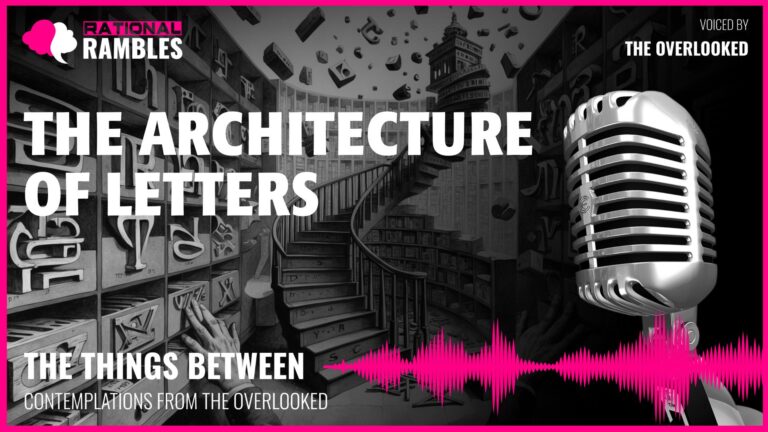The Architecture of Meaning: How Minds Transform Chaos into Patterns
Introduction
In the nebulous territory between objective reality and subjective experience lies one of the most fascinating aspects of human consciousness—our relentless drive to detect patterns, recognize forms, and extract meaning from the random noise of existence. This cognitive tendency, far from being a mere curiosity or evolutionary vestige, represents a fundamental aspect of how we engage with and make sense of our world. It shapes our perceptions, influences our beliefs, and ultimately helps construct the reality we inhabit.
Every day, we engage in countless acts of pattern recognition—seeing faces in clouds, discerning shapes in wood grain, identifying familiar profiles in mountain ridges, or noticing expressions in the front grilles of automobiles. These perceptual experiences, straddling the boundary between objective reality and subjective interpretation, reveal profound truths about the nature of consciousness and our place in the universe.
This article explores the philosophical implications of our pattern-seeking nature, particularly our tendency to perceive faces and familiar forms in random stimuli. By examining this phenomenon through multiple philosophical lenses—from phenomenology to epistemology, from aesthetics to existentialism—we can gain deeper insights into the meaning-making apparatus of the human mind and its relationship to reality. What does our compulsion to see order in chaos tell us about consciousness? How does this pattern-recognition shape our understanding of meaning itself? And what implications does this have for our quest to understand both the external world and our inner lives?
The Phenomenology of Pattern Recognition
At its core, the experience of recognizing patterns in randomness represents a unique form of perceptual engagement with the world. Unlike straightforward perception of objects that exist independently of our observation, pattern recognition in random stimuli creates a peculiar phenomenological state where the perceived object exists simultaneously as both present and absent.
The Dual Nature of Perceived Patterns
When we see a face in the knots of wood or in the arrangement of electrical outlets, we experience a perceptual paradox. The face is undeniably “there” in our experience—we see it, respond to it emotionally, and can describe its features. Yet it is simultaneously “not there” in any objective sense; another observer might see nothing but random elements. This dual nature creates a unique phenomenological state that philosopher Maurice Merleau-Ponty might recognize as revealing the intertwining of perception and reality.
Unlike hallucinations, which represent a complete break from shared reality, or ordinary perception, which typically aligns with objective reality, pattern recognition occupies a middle ground. The pattern is genuinely perceived, yet it emerges from the interaction between objective features and subjective interpretation. It exists in the relationship between world and perceiver.
The Temporality of Pattern Emergence
The temporal dimension of pattern recognition adds another layer to its phenomenology. Patterns often emerge suddenly—a random arrangement catches our eye just right, and in an instant, a face appears in the marble tile. This emergence has a revelatory quality, a moment of perceptual “aha” that feels like discovery rather than creation. Yet these patterns can disappear just as quickly when lighting changes or perspective shifts.
This ephemeral quality mirrors what philosopher Martin Heidegger described as the “unconcealing” of truth—moments when aspects of reality reveal themselves to us. The perceived pattern feels like something uncovered rather than invented, despite its subjective nature. This temporal instability of perceived patterns highlights the dynamic, interactive nature of perception itself.
The Role of the Body in Pattern Perception
Phenomenology emphasizes the embodied nature of perception—we perceive not as disembodied minds but as beings with specific sensory apparatus and bodily orientations to the world. Our tendency to recognize faces in particular reflects our embodied nature as social creatures. The face recognition systems in our brains, developed through evolution and refined through early attachment experiences, shape how we engage with visual stimuli.
Our perceptual systems are not neutral recording devices but active participators in creating our experienced reality. The body’s perceptual priorities—especially its sensitivity to faces—color how we encounter the world and what patterns emerge from the random. As Merleau-Ponty might argue, we do not simply see the world; we inhabit it perceptually through our embodied engagement.
Epistemological Implications: Knowledge in the Face of Projection
Our tendency to see patterns where none objectively exist raises profound epistemological questions about the nature of knowledge, the reliability of perception, and the boundary between discovery and invention. If we so readily project structure onto randomness, how can we trust any of our perceptions? Does our pattern-recognition tendency undermine or enhance our ability to know the world?
Pattern Recognition: Error or Insight?
From a strictly empiricist perspective, seeing faces in clouds or figures in wood grain might be dismissed as simple perceptual errors—failures of our pattern-recognition systems that evolved for survival purposes but occasionally misfire. This view, however, neglects the possibility that pattern recognition might sometimes yield genuine insights rather than mere projections.
Consider how scientific discovery often begins with the recognition of patterns in seemingly random data. Johannes Kepler perceived mathematical patterns in astronomical observations that led to his laws of planetary motion. Darwin discerned patterns of adaptation across species that revealed evolutionary mechanisms. Were these merely projections of human pattern-seeking, or did they reveal genuine structures in reality?
The boundary between projection and discovery is more permeable than we might initially assume. Pattern recognition exists on a spectrum from clear error (seeing a specific face in a random ink blot) to genuine insight (recognizing mathematical regularities in natural phenomena). Between these extremes lies a vast territory where the distinction between finding and creating patterns becomes philosophically complex.
The Social Dimension of Knowledge
The epistemological questions become even more interesting when we consider the social dimension of pattern recognition. Some perceived patterns are idiosyncratic—only one observer perceives a particular face in tree bark. Others are widely shared—most people agree that a certain cloud formation resembles a rabbit. This spectrum from individual to collective recognition raises questions about the role of intersubjectivity in validating knowledge.
Philosopher Thomas Kuhn’s work on scientific paradigms offers a useful parallel. Kuhn argued that scientific communities share perceptual frameworks that determine what counts as a meaningful pattern in experimental data. What looks like random noise to outsiders appears as significant patterns to those within the paradigm. This suggests that even our most rigorous knowledge practices involve socially mediated pattern recognition.
The intersubjective validation of patterns doesn’t necessarily make them more “real” in an objective sense, but it does challenge simplistic distinctions between subjective projection and objective discovery. Our epistemological frameworks—scientific, religious, artistic—are social achievements that help determine which patterns we consider meaningful and which we dismiss as illusions.
Constructivist and Realist Perspectives
Our pattern-seeking nature has been interpreted differently by constructivist and realist philosophical traditions. Constructivists might view our tendency to see faces in random patterns as evidence that all knowledge is fundamentally constructed rather than discovered—that we actively create the reality we perceive rather than passively receiving it.
Realists, by contrast, might argue that while specific instances of pattern recognition can be erroneous, our general capacity for pattern recognition evolved precisely because patterns do exist in nature. In this view, our pattern-recognition systems, despite occasional errors, generally track real structures in the world.
A middle path recognizes that knowledge emerges from the interaction between mind and world—neither purely constructed nor simply discovered. Philosopher John Dewey’s pragmatism offers such a view: knowledge involves transactions between organisms and environments, with patterns emerging at this interface rather than residing exclusively in either the objective world or the subjective mind.
The Existential Significance of Pattern-Seeking
Beyond the phenomenological and epistemological questions, our compulsion to find patterns in randomness carries profound existential implications. This tendency reveals something essential about how humans cope with existence in a universe that may be indifferent to our need for meaning.
Confronting Chaos: Pattern Recognition as Existential Strategy
Existentialist philosophers like Albert Camus and Jean-Paul Sartre emphasized that humans exist in a universe that lacks inherent meaning or purpose. Confronted with this apparent absurdity, humans must create meaning rather than discover it. Our pattern-seeking nature can be understood as an embodiment of this existential project—a way of imposing order on chaos, meaning on meaninglessness.
When primitive humans saw faces in the moon or figures in the stars, they weren’t merely making perceptual errors; they were engaging in the fundamentally human act of meaning-making. By organizing random celestial bodies into narratives and personalities, they transformed the indifferent cosmos into a meaningful dwelling place. This pattern-recognition wasn’t a bug in human cognition but its essential feature—the ability to create significance in a universe that offers none inherently.
Pattern Recognition and Human Connection
There is something poignant about our specific tendency to see faces in random patterns. As inherently social beings, we seek connection even in isolation. The person who perceives a face in wood grain or cloud formations is never truly alone—they have populated their world with the semblance of others, transformed emptiness into presence.
This tendency reflects what philosopher Martin Buber described as the human oscillation between I-It relationships (treating the world as a collection of objects) and I-Thou relationships (encountering others as subjects). Our pattern-recognition systems constantly push us toward the latter, transforming the impersonal it of random patterns into the personal thou of a perceived face. We cannot bear a universe that doesn’t look back at us, so we unconsciously create the experience of being seen.
Meaning-Making as Essential Human Freedom
Existentialist philosophy emphasizes freedom as the defining characteristic of human existence—we are “condemned to be free,” in Sartre’s words, forced to create meaning rather than receive it. Our pattern-seeking tendencies represent this freedom in action: we transform the given (random stimuli) into the meaningful (perceived patterns) through acts of perceptual creation.
This suggests that seeing faces in clouds or figures in wallpaper isn’t a mere cognitive error but an expression of our essential nature as meaning-makers. We cannot help but exercise our freedom to interpret, to transform, to create significance. Even when we intellectually know that the face in the electrical outlet is “just” pattern recognition, we cannot help but see it—our freedom to create meaning outstrips our ability to suppress it.
Aesthetics and Creativity: Pattern-Seeking as Artistic Impulse
Our tendency to perceive patterns in randomness shares profound connections with artistic creation and aesthetic experience. Indeed, this perceptual tendency might represent the most primitive form of the artistic impulse—the transformation of random elements into meaningful forms.
The Artist’s Eye: Creative Pattern Recognition
Leonardo da Vinci famously advised aspiring artists to find inspiration in the stains on old walls, writing: “If you look upon an old wall covered with dirt, or the odd appearance of some streaked stones, you may discover several things like landscapes, battles, clouds, uncommon attitudes, humorous faces, draperies, etc.” This advice reveals how the artist’s creativity often begins with the same perceptual process that makes us see faces in clouds—the ability to perceive potential forms in random stimuli.
The difference between ordinary pattern recognition and artistic creation may be one of degree rather than kind. Where the average person passively perceives a face in wood grain, the artist actively develops and elaborates this perception, bringing it to fuller expression. Artists don’t merely see patterns; they refine, extend, and communicate them, making explicit what might otherwise remain implicit in perception.
The Aesthetic Experience of Pattern Emergence
The moment when a pattern emerges from apparent randomness—when suddenly the face appears in the marble veins—has an inherently aesthetic quality. There is a pleasure in this perceptual resolution, a satisfaction when chaos resolves into order. This mirrors what philosopher John Dewey described as the consummatory phase of aesthetic experience—the moment when tension resolves into harmony.
Perhaps this explains the particular delight children take in finding shapes in clouds or seeing faces in objects. These moments of pattern discovery represent aesthetic experiences available without special training or cultural knowledge—democratic experiences of meaning-making accessible to all perceivers regardless of education or background.
Art as Deliberate Pattern Creation
If spontaneous pattern recognition represents an unconscious aesthetic process, then art can be understood as its deliberate counterpart. The painter arranges pigments to create meaningful patterns; the composer organizes sound waves into harmonies; the poet structures language into rhythms and images. All artistic creation involves imposing order on the materials of experience, transforming the random into the meaningful.
This perspective challenges the romantic notion of art as pure creation ex nihilo. Instead, artistic creation emerges from the same cognitive processes involved in ordinary perception—the ability to detect, enhance, and communicate patterns. The artist doesn’t create in isolation from perceptual processes but rather intensifies and directs these processes toward expressive ends.
Cultural and Historical Dimensions
Our pattern-seeking tendencies, while rooted in universal cognitive processes, express themselves differently across cultures and historical periods. The specific patterns we recognize, the meanings we attribute to them, and the significance we accord to pattern recognition itself all vary according to cultural and historical context.
Cultural Variation in Pattern Recognition
Cross-cultural studies reveal fascinating variations in how different societies perceive patterns. The constellations provide a clear example: the same random arrangement of stars that Greeks organized into the figure of Orion appears as entirely different figures in Chinese, Native American, and Australian Aboriginal astronomy. These variations demonstrate that while the tendency to see patterns may be universal, the specific patterns perceived are culturally mediated.
Similarly, religious pareidolia—the perception of religious figures in random patterns—varies according to cultural background. Christians might perceive the face of Jesus or Mary in a water stain, while Hindus might perceive Ganesh or Krishna. The cognitive process is the same, but the specific content reflects cultural immersion and expectation.
Historical Evolution of Attitudes Toward Pattern Recognition
Throughout history, attitudes toward perceived patterns have evolved dramatically. Ancient cultures typically viewed perceived patterns as genuinely significant—the face in the moon wasn’t a perceptual illusion but a divine presence. Medieval European culture often interpreted unusual patterns as miraculous signs or demonic manifestations. The scientific revolution brought increased skepticism toward such interpretations, reframing perceived patterns as psychological projections rather than external realities.
Contemporary culture contains multitudes—scientific skepticism toward perceived patterns coexists with continued religious and spiritual interpretations of similar phenomena. A water stain resembling a religious figure might be simultaneously explained as pareidolia by scientists, venerated as miraculous by believers, appreciated aesthetically by artists, and analyzed symptomatically by psychologists. This multiplicity of interpretations reflects the complex, layered nature of contemporary approaches to meaning-making.
Technology and New Frontiers of Pattern Recognition
The digital age has created new domains for pattern recognition. We perceive faces in the front of cars, in electrical outlets, in the arrangement of computer interface elements. These technological expressions of pareidolia reveal how our pattern-seeking tendencies adapt to new environments while maintaining their essential character.
More profoundly, we now create artificial systems that mimic our own pattern-recognition abilities. Machine learning algorithms can experience their own form of “digital pareidolia,” detecting faces where none exist. This technological extension of pattern recognition raises fascinating questions about the relationship between human cognition and artificial intelligence. By programming machines to find patterns, we externalize and make explicit processes that normally operate unconsciously in human perception.
Psychological and Neurological Foundations
While the philosophical implications of pattern recognition extend across multiple domains, they are grounded in specific psychological and neurological mechanisms. Understanding these mechanisms doesn’t reduce the philosophical significance of pattern recognition but rather enriches our appreciation of how meaning emerges from mind-brain processes.
The Evolutionary Psychology of Pattern Recognition
Evolutionary psychologists suggest that our pattern-recognition systems evolved for survival advantages. Detecting predators camouflaged in foliage, recognizing subtle social cues in facial expressions, and identifying environmental patterns that predict weather or seasonal changes all conferred survival benefits to our ancestors. In this view, our tendency to see faces in clouds represents an over-activation of adaptively useful perceptual systems—false positives being less costly than false negatives when detecting potential threats or social opportunities.
This evolutionary account explains the prevalence of face pareidolia in particular. As intensely social primates, humans needed to quickly identify faces and interpret facial expressions. The cost of missing a hidden predator or failing to notice a subtle social cue could be high, while the cost of occasionally seeing illusory faces in random patterns was relatively low. Our perceptual systems evolved to err on the side of detection rather than caution.
Neural Mechanisms and Face Perception
Neuroscience has identified specific brain regions, particularly the fusiform face area, that activate not only when we see actual faces but also when we perceive face-like patterns in random stimuli. This suggests that illusory face perception engages the same neural machinery as genuine face perception—the brain processes perceived patterns as if they were actually faces.
The involvement of these specialized neural systems explains why face pareidolia feels perceptually compelling rather than merely conceptual. We don’t merely think we see a face in the cloud; we actually see it, with the full perceptual vividness that accompanies genuine face perception. The neural systems don’t initially distinguish between “real” and “illusory” patterns, processing both through the same perceptual channels.
Predictive Processing and Pattern Completion
Contemporary cognitive science increasingly views perception as a process of prediction rather than passive reception. The brain constantly generates predictions about incoming sensory data based on prior experience and fills in missing information according to these predictions. This “predictive processing” framework helps explain why we so readily perceive complete patterns in partial or ambiguous stimuli.
When random elements happen to approximate aspects of familiar patterns (like faces), our predictive perceptual systems complete the pattern according to prior expectations. We don’t merely recognize patterns that are fully present; we actively participate in constructing patterns by filling in missing elements and resolving ambiguities according to our perceptual predictions. This account aligns with philosophical views that emphasize the active, constructive nature of perception rather than seeing it as passive reception of pre-existing patterns.
Spiritual and Religious Dimensions
Throughout human history, the perception of meaningful patterns in random phenomena has been intimately connected with spiritual and religious experience. From ancient star patterns interpreted as deities to modern perceptions of religious figures in everyday objects, pattern recognition has served as a bridge between ordinary perception and transcendent experience.
Divine Signals: Pattern Recognition in Religious Experience
Religious traditions worldwide have interpreted perceived patterns as communications from divine or supernatural realms. The face in the cloud becomes an angel; the figure in the tree bark becomes a manifestation of a deity; the unusual arrangement of stones becomes a sign from ancestral spirits. These interpretations transform ordinary pattern recognition into hierophany—the manifestation of the sacred in the ordinary.
Philosopher William James, in his studies of religious experience, noted how ordinary perceptual experiences could take on profound religious significance when interpreted within spiritual frameworks. The perceptual experience itself might be unremarkable—seeing a pattern in natural phenomena—but the interpretation of this experience as manifestation of divine presence creates a transformative religious moment.
The Creation of Religious Cosmologies
On a larger scale, pattern recognition has played a crucial role in the development of religious cosmologies. Ancient peoples organized random star distributions into constellations, then wove these constellations into elaborate mythological narratives. These celestial patterns became the basis for calendar systems, agricultural planning, and navigational techniques, embedding pattern recognition within practical systems while maintaining their spiritual significance.
This process reveals how perceived patterns can scaffold increasingly complex meaning systems. What begins as simple recognition of a bear-like pattern in stars becomes an elaborate myth explaining seasonal changes, which in turn becomes integrated into ritual calendars organizing community life. The perceived pattern serves as a seed crystal around which layers of meaning accumulate.
Skepticism and Faith in Pattern Interpretation
The modern era has brought increased skepticism toward religious interpretations of perceived patterns. What previous generations might have accepted as miraculous manifestations are now commonly explained as psychological projections or perceptual quirks. When a water stain resembling a religious figure attracts pilgrims, skeptics and believers engage in fundamentally different interpretive practices regarding the same perceptual phenomenon.
This tension reveals a profound philosophical question: does explaining the mechanism of pattern recognition (as pareidolia) necessarily invalidate the meaning attributed to the pattern? Religious perspectives might argue that divine communication could work precisely through natural psychological mechanisms—that explaining how we see patterns doesn’t address why specific patterns emerge at particular moments. The skeptical position counters that natural explanations make supernatural interpretations unnecessary.
Philosopher Charles Taylor has described this tension as characteristic of our “secular age”—we live in a time when both religious and secular interpretations of experience are simultaneously available, creating conditions where belief becomes an option rather than a given. Our relationship to perceived patterns exemplifies this condition: the same pattern can be interpreted as miraculous sign or cognitive projection, depending on one’s philosophical framework.
Ethical Considerations: The Responsibility of Interpretation
Our tendency to perceive patterns in randomness raises important ethical questions about interpretation and its consequences. If we readily project meaning onto random stimuli, what responsibilities accompany our interpretive activities? How should we navigate the terrain between skepticism and openness to perceived patterns?
The Ethics of Pattern Attribution
There can be significant consequences to how we interpret perceived patterns. Throughout history, unusual natural phenomena interpreted as omens or divine messages have influenced major decisions—from ancient rulers interpreting cloud formations as battle omens to modern individuals making life choices based on perceived “signs.” Since we know our pattern-recognition systems can generate false positives, what ethical obligations do we have regarding the authority we grant to perceived patterns?
This question becomes particularly acute in contexts where pattern interpretations affect others. When a religious leader interprets a natural pattern as divine command, when a conspiracy theorist perceives patterns in random events as evidence of malevolent plots, or when a parent sees a deceased child’s face in random patterns, the interpretation has consequences beyond the individual perceiver.
Philosopher Hans-Georg Gadamer argued that all interpretation involves application—we don’t merely understand meanings; we apply them to our lives and circumstances. This application dimension of interpretation carries inherent ethical responsibilities, especially when our pattern interpretations influence actions affecting others.
Balancing Skepticism and Openness
An ethical approach to pattern recognition requires balancing appropriate skepticism with openness to meaningful patterns. Excessive skepticism that dismisses all perceived patterns as mere projection risks a reductive worldview that impoverishes experience. Yet uncritical acceptance of all perceived patterns as inherently meaningful risks superstition and potential manipulation.
Philosopher Paul Ricoeur proposed a “hermeneutics of suspicion” balanced by a “hermeneutics of recovery”—approaches to interpretation that combine critical questioning with openness to meaning. This balanced approach neither naively accepts every perceived pattern as meaningful nor reflexively dismisses all pattern recognition as mere projection.
The ethical challenge becomes developing what philosopher Martha Nussbaum might call “perceptual wisdom”—the ability to discern which perceived patterns merit serious consideration and which should be recognized as projections without significant external reference. This wisdom isn’t merely intellectual but involves emotional maturity and contextual judgment.
Patterns and Pluralism
The culturally variable nature of pattern recognition raises ethical questions about pluralism and respect for diverse interpretations. If different cultural traditions perceive and interpret patterns differently, how should we navigate these differences? The same arrangement of stars that one culture sees as a bear, another sees as a hunter, and yet another as a ceremonial object. None of these perceptions is more objectively “correct” than others.
Philosopher Kwame Anthony Appiah’s concept of “cosmopolitan pluralism” offers guidance here—we can acknowledge the legitimacy of diverse pattern interpretations while maintaining critical engagement across interpretive traditions. This approach respects the cultural embeddedness of pattern recognition while avoiding a relativism that precludes cross-cultural dialogue about perceived patterns.
Conclusion: The Meaning of Our Meaning-Making
Our exploration of pattern recognition—particularly our tendency to see faces and meaningful forms in random stimuli—has traversed diverse philosophical territories, from phenomenology to ethics, from aesthetics to epistemology. Throughout this journey, a consistent theme emerges: the boundary between finding and creating meaning is far more permeable than we often assume. Our perception of patterns reveals as much about the structure of consciousness as it does about the structure of reality.
Perhaps what makes our pattern-seeking nature so philosophically significant is how it reveals the fundamentally interpretive character of human existence. We do not merely register the world; we constantly interpret it, transform it, make it meaningful through our perceptual and cognitive engagement. The face in the cloud exemplifies this interpretive relationship to reality—neither purely objective discovery nor merely subjective projection, but an emergent phenomenon at the interface between mind and world.
Our pattern-seeking tendencies should not be dismissed as mere cognitive errors or evolutionary vestigies. They represent the most basic manifestation of our meaning-making capacity—the same capacity that generates art, science, religion, and philosophy itself. The child who sees dragons in clouds, the scientist who perceives mathematical patterns in physical phenomena, the artist who discerns potential forms in random materials, and the religious person who perceives divine presence in natural events are all engaging in variations of the same fundamental human activity: the transformation of the given into the meaningful.
In a universe that may or may not contain inherent meaning, we are meaning-makers by nature. Our pattern-seeking tendencies reveal that we cannot help but engage in this meaning-making enterprise—it is woven into the very structure of our perception and cognition. Perhaps, then, the philosophical significance of our pattern recognition lies not in whether the patterns we perceive are “really there” in some objective sense, but in what our irrepressible drive to perceive patterns reveals about our nature as beings who cannot help but make the world meaningful.
The face in the cloud may be illusory, but our need to see that face—to transform randomness into order, chaos into meaning, the unfamiliar into the familiar—is perhaps the most profound truth about human consciousness. We are the beings who make meaning, even from meaninglessness. And in that capacity lies both our greatest vulnerability and our greatest strength.



